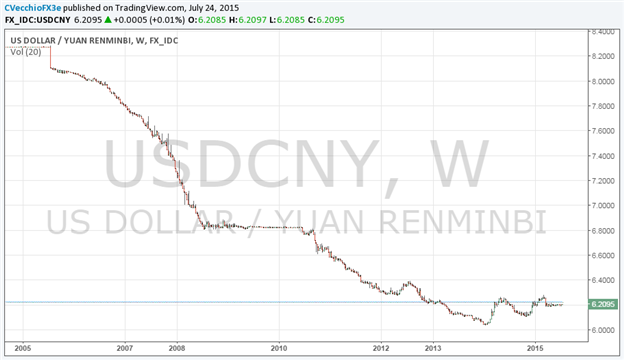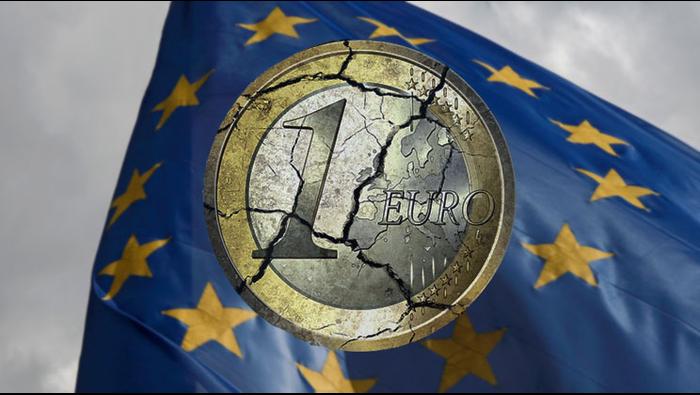Talking Points:
- Chinese Renminbi was de-pegged in July 2005.
- USDCNY has depreciated by -25% since the de-pegging.
- Chinese Renminbi on its way to status as a global funding currency (akin to the US Dollar).
It’s been nothing short of a first successful ten years for the Chinese Renminbi, which was depegged a decade ago in July 2005. The Renminbi has gained acceptance as a major currency on a global scale in recent years, which bodes well for the future.
There has been growing international adoption of Renminbi payments in the post-2008 crisis world, and by December 2013, the Renminbi had jumped ahead of the Euro as the second-most used currency in trade finance. By February 2014, Renminbi bond global issuance was surging at an all-time high. The fallout of the 2008 crisis, which originated in Western economies, proved to be fertile ground for the Renminbi to gain a footing worldwide.

While Chinese authorities may have done a well enough job managing the exchange rate over the past decade, the Renminbi’s march to global acceptance and China’s domestic market opening up to the West will increasingly put strain on policy, due to the relationship known as the “impossible trinity” or “trilemma.” The trilemma states that a country cannot have free movement of capital, independent monetary policy, and a managed foreign exchange rate, all at the same time.
Due to the Renminbi’s increasing acceptance, it’s likely that Chinese authorities will have to move to loosen its RMB trading band or abandon its managed foreign exchange policy altogether. Accordingly, in the next decade, as a result of the Renminbi appreciating in value once in a completely free floating regime, it’s likely that the Chinese export engine slows as the stronger Renminbi makes Chinese exporters less competitive.
The next ten years should see the Renminbi’s global acceptance and forecoming strength as a blessing and a curse: a sign of global faith in the Chinese economy and financial markets as a store of liquidity, safety, and value; and slower growth rates as exporters lose their competitive edge to regional manufacturers.
Read more: Euro Weighed by Risk Repricing Post-Greece, Almost QE-driven Again
--- Written by Christopher Vecchio, Currency Strategist
To contact Christopher Vecchio, e-mail cvecchio@dailyfx.com
Follow him on Twitter at @CVecchioFX
To be added to Christopher’s e-mail distribution list, please fill out this form




